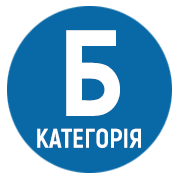PROSPECTS FOR APPLICATION OF MULTIMEDIA DEMONSTRATIONS CREATED BY MEANS OF FLASH
DOI:
https://doi.org/10.25128/2415-3605.22.1.3Keywords:
animation, interface, Flash-demonstrations, multimedia, interactivity, experimentAbstract
The use of information and communication technologies makes it possible to create and study models in various subject areas. Therefore, educators are increasingly turning to multimedia teaching aids. As a result, the problem of creating multimedia demonstrations became quite acute, which determined the purpose of the work: to consider the possibilities of Flash to create multimedia products. The authors tried to show a wide range of uses of multimedia presentations in the educational process; considered the Flash program as a tool for creating multimedia demonstrations; identified the benefits of using the above program in the process of creating educational multimedia tools; demonstrated the developed multimedia demonstration using Adobe Flash. Multimedia demonstrations, or as they are also called, interactive demonstrations, and animated demonstrations, are the most extensive types of demonstrations. Today, Flash has become such a wide and diverse environment that it is not easy to find a specialist who is equally good at using all its features. The article also mentions the didactic properties of multimedia tools: multichannel, clarity, integrated presentation of knowledge, interactivity. The properties of interactivity allow you to integrate audio, video files, animation, interface (menu system - control), three-dimensional objects and any other elements into the multimedia demonstration without losing quality. It is safe to conclude that Flash-demonstrations are a universal product that allows you to most harmoniously combine educational information with bright non-trivial design and animation, getting the most out of the demonstration. As for the traditional opportunities for animation and graphics program, the support of developers in this regard has become more complete than ever. This support is no longer limited to animation, as Flash has evolved into an effective multimedia tool capable of integrating a wide range of languages and multimedia formats. This is the ability to create animations in a single file, without folders and swapping documents. Another huge plus is the ability to install Flash-based due to the relatively small file size of the autorun when booting from disk. We consider promising research of methodological aspects of the application of the developed demonstrations in the educational process.
References
Вакуленко Т. С., Петрова В. В. Розвиток пізнавальної самостійності студентів електронними засобами навчання. Науково-дослідна робота студентів як чинник удосконалення професійної підготовки майбутнього вчителя: зб. наук. праць. Харків: Віровець А. П. «Апостроф», 2012. Вип. 6. С. 24–28.
Вітюк В. В., Зуйко К. В. Використання мультимедійних презентацій на уроках літературного читання. World Science. 2016. № 1 (5). Vol. 3 January. P. 13–16.
Галета Я. В. Формування пізнавальної самостійності студентів економічного коледжу засобами інформаційних технологій: автореф. дис. … канд. пед. наук. Кіровоград. 2005. 27 с.
Грод І., Дудін О. Створення програмованих анімацій за допомогою Flash-технологій. Наукові записки ТНПУ імені Володимира Гнатюка. Серія: педагогіка. 2008. № 3. С. 173–178.
Життєньова Н. В. Застосування комп’ютерної підготовки для формування пізнавального інтересу у процесі навчання природничо-математичних дисциплін: навчальний посібник. Харків, 2008. 60 с.
Завгородня О. С. Використання інтерактивних лекційних модулів як інструменту електронного навчання. Науковий вісник Херсонського державного університету. Серія «Економічні науки». 2015. Вип. № 12. Ч. 2. С. 213–217.
Комп’ютеризовані системи і технології у видавничій справі: монографія; під ред. О. І. Пушкаря. Харків: ВД «ІНЖЕК», 2015. 312 с.
Мультимедійні системи як засоби інтерактивного навчання: посібник / авт.: Жалдак М. І., Шут М. І., Жук Ю. О., Дементієвська Н. П., Пінчук О. П., Соколюк О. М., Соколов П. К. Київ: Педагогічна думка, 2012. 112 с.
Нагачевська Х. П. Сучасні підходи до викладання гуманітарних дисциплін у профільних класах із використанням інформаційних технологій навчання. Таврійський вісник освіти. 2014. № 1 (45). Ч. ІІ. С. 205–210.
Розробка електронних видань на основі мультимедійних технологій: монографія; під ред. д. е. н., проф. О. І. Пушкаря. Харків: ВД “ІНЖЕК”, 2015. 288 с.
Сорокіна Н.В. Формування професійної іншомовної компетентності майбутніх філологів засобами мультимедійних технологій: автореф. дис. … канд. пед. наук: 13.00.04. Київ, 2016. 22 с.
Шкурупій Д. А. Мультимедійні технології в навчальному процесі медичного вишу: можливості і проблеми використання. Вісник проблем біології і медицини. 2014. Вип. 4. Т. 1 (113). С. 44–46.






